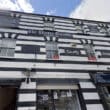If you’re taking a stroll through Armagh’s picturesque Mall, it won’t be long before you eye the magnificent 185 ft tall spire protruding from First Armagh Presbyterian Church.
The unique, High Gothic Church was built in 1879 and has been a constant in the city ever since as the landscape continues to change across the area.
As part of the ongoing 350th anniversary celebrations at the church, the congregation has extended a warm welcome to the public to come and visit the building, and the treasure trove of historical items and artifacts located within.
The building is open to visitors on Thursdays, Fridays and Saturdays, in addition to the Sunday Service, during the month of August. It will also be open as part of the European Heritage Open Days Visitor Programme on Saturday, September 9 and Sunday, September 10.
It is reckoned that Presbyterians have worshipped in Armagh since 1673, with this beautiful building actually being the third meeting house occupied by the congregation since then.
Armagh I sat down with church member Ivor Stevenson, who explained the history of the three buildings that the congregation has called home over the years.
He says that the current building is capable of holding around 850 people, and was built at the then-substantial cost of £10,000.
“The building itself wasn’t painted until 1905. Then, also in 1905, an organ was installed, the first one in County Armagh in the Presbyterian Church,” he explained.
“Before that, hymns were not looked upon favourably in most Presbyterian churches, but in 1895 we were allowed to have an organ in Presbyterian churches. Hymns were then introduced and made their way to the present day.”
The previous building was built in 1722 and still stands today just up the road on Abbey Street.
Ivor said: “It was a large building and had galleries all the way around. Each pew had a little door and you rented your pew. Happily, we’ve done away with pew rents and everyone, when they come to church, can sit wherever they like.”
The building before Abbey Street was located in the Shambles area, but Ivor admits that the history of that site is a bit more confusing.
“It was also stone-built and was a large church, but we can’t fully verify exactly where it was because the maps of those days were pretty vague and not terribly accurate. In 1760, Rocque’s map shows the old meeting house at the Shambles and the new meeting house in Abbey Street.
“We think it may have had a thatched roof and was a very big building, one of the biggest in the north. There were pews the whole way around but the records are extremely scarce. We only have session minutes from 1707 to 1728, which is after the building was erected.”
Speaking on just some of the 19 ministers that have served the congregation over the years, Ivor says that many had great influence on the life of not just Armagh, but further afield.
He explained: “The first minister that was called to the church was in 1673 and that was Mr Archibald Hamilton, who originated from a congregation in Benburb.
“Part of his reputation was that he met William of Orange when he came over to Ireland to express to him the support of the Presbyterian Society for his campaigns in Ireland. He then fled from Armagh because King James’s army was encamped at Legar Hill and he was fearing for his safety.”
Hamilton, along with several ministers fled to Scotland, not to return until the conflict was over. However, he didn’t return to Armagh, instead finishing his ministry in Killinchy.
The next minister, following a long vacancy, was the Rev John Hutcheson, who was responsible for building the new meeting house on Abbey Street. One of his children was Francis Hutcheson, who was involved in the Scottish Enlightenment and was influential in Colonial America.
Ivor added: “The most recent minister that we’ve had was the Rev Tony Davidson, who we had a wonderful relationship with over the last 29 odd years. He was a great motivator, a great pastor, and we had a very useful and wonderful time with him.”
Read more: First Armagh Presbyterian welcoming summer visitors to celebrate 350th year





